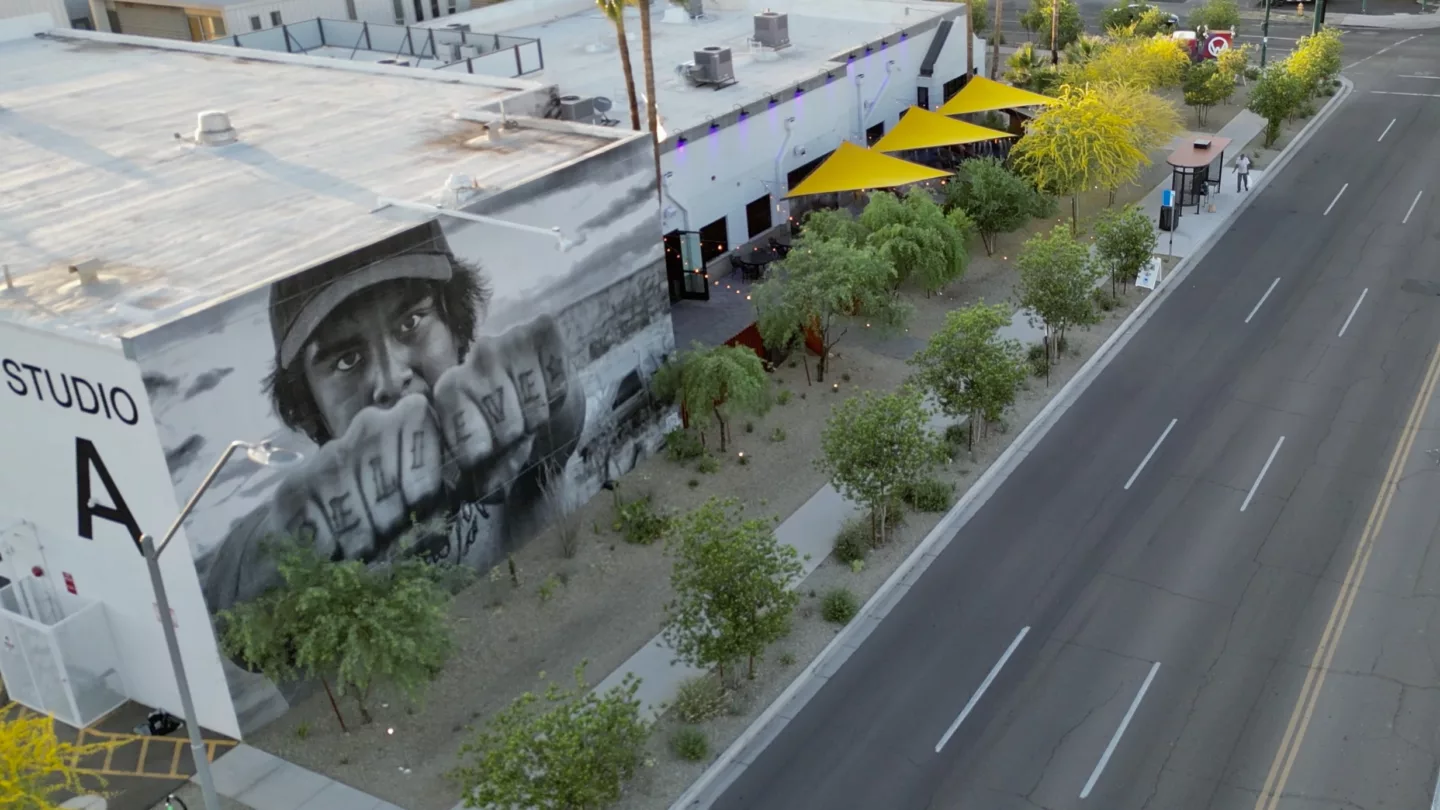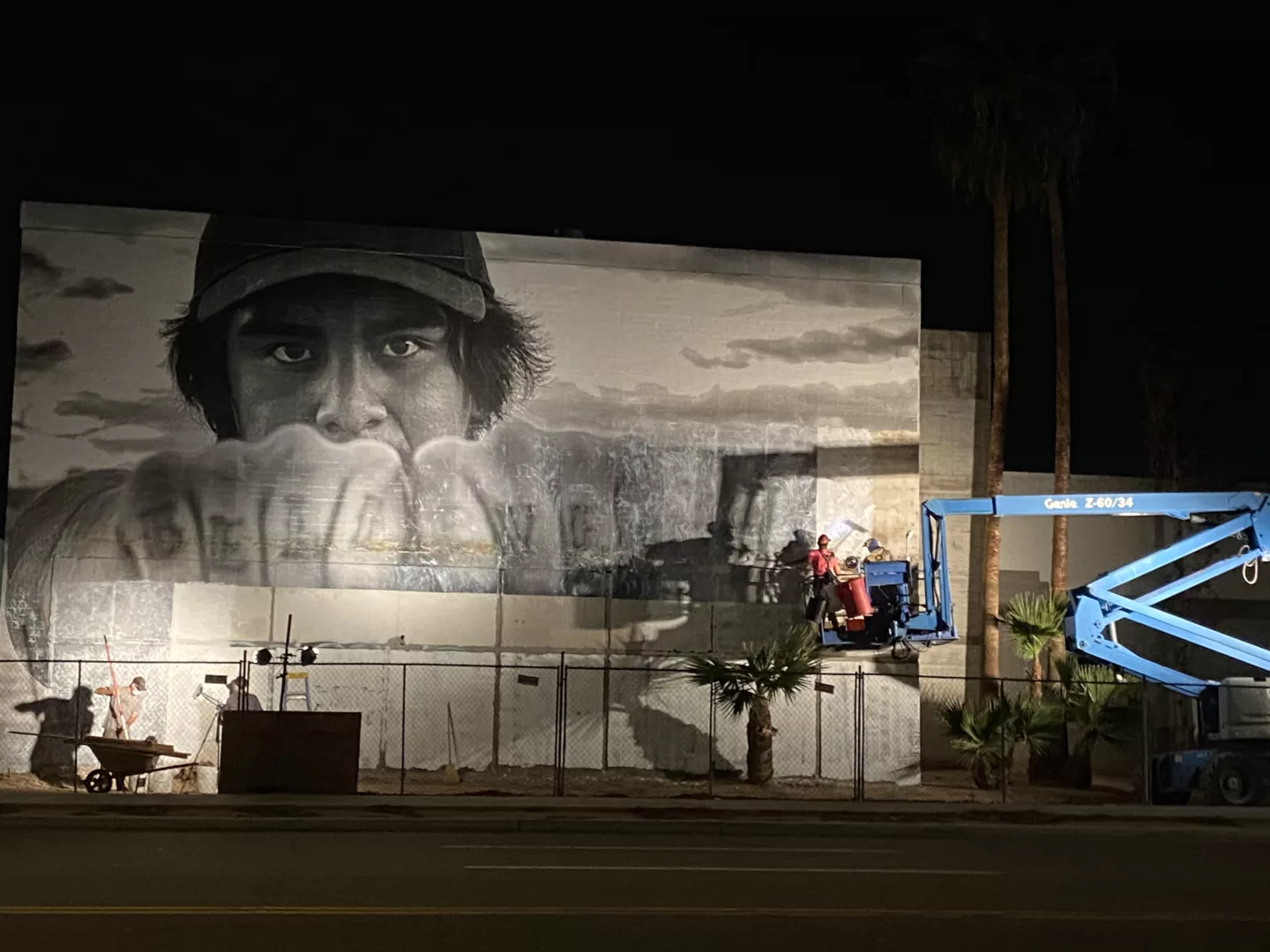BELIEVE
Wheatpaste Photo Mural
2019


I met Jordan one day when he wheeled his dad into my examination room. Over the course of the visit I was taken by his kindness and respect towards his dad (who used to be a Navajo Nation police officer). At the conclusion of the visit I asked about his tattoos and whether I could come to his place to photograph him and learn more about them. He was happy to oblige.




The question I’m asked most frequently is how a black doctor in his 50s working on the Navajo reservation started doing street art on said reservation. In retrospect, it was only natural for this evolution to occur.
I started working in a small community between the Grand Canyon and Monument Valley called Inscription House in 1987. I’d always been drawn to photography and built a darkroom shortly after my arrival on the Navajo Nation. My passion photographically is shooting black and white in a documentary style inspired by people like Eugene Smith, Eugene Richards, Joseph Koudelka and others. By going out and spending time with people in their homes and family camps, I have come to know them as friends. Interestingly, these home visits enhance my doctor/patient relationship by helping me be a more empathetic health care practitioner.
I’ve always been drawn to street art, graffiti and old school hip-hop. I was attracted to the energy of the culture in the 80s and though I was miles away from the epicenter, I thought of myself as a charter member of the Zulu Nation. I would travel to New York City to see graffiti on trains, on buildings and in galleries. I did some tagging in the 80s before coming to the Navajo Nation and participated with a major billboard “correction” on the reservation shortly after my arrival.
In 2009 I took a 3-month sabbatical to Brasil where I was fortunate to stumble upon a passionate group of artists working on the street who befriended me. It was during this time that I appreciated how photography could be a street art form. Inspired by Diego Rivera and Keith Haring, I’d become disinterested in showing my photographs in galleries isolated from the people I was photographing and wanted to pursue a more immediate relationship with my community reflecting back to them some of the beauty they’ve shared with me.
